Which camera microphone do you need? Camera microphones comparison
Two things always go hand in hand in a good film production: sound and image. As we all know, the image is captured by the camera—but what about the sound? Internal camera microphones are not really suitable for recording usable audio for video production. They are too quiet, too muffled, and produce too much noise and ambient sound.

Whether you want to get started on YouTube, simply want to capture good memories on video, or want to impress as a professional filmmaker, we’ll show you what types of microphones are available for good sound recordings and help you find the right model for your application.
TL;DR: Our recommendations
- Use our affiliate links and support our work.
Our website is free of advertising banners and we state transparently when we have been sent a product. By purchasing from our affiliate partners you do not pay more and support us. Thank you!
Wireless microphone, shotgun or handheld?
You really only have three options if you want to use an external microphone for audio with your camera. It depends on what content you want to produce and what workflow you prefer. In other words: What exactly do you want to record and how should this be done?
If you have already thought about these questions, you can use the following microphone types as a guide:
Shotgun-microphones
You really only have three options if you want to use an external microphone for audio with your camera. It depends on what kind of content you want to produce and what workflow you prefer. In other words: What exactly do you want to record and how do you want to do it?
Once you’ve thought about these questions, you can choose from the following types of microphones:
This might interest you:
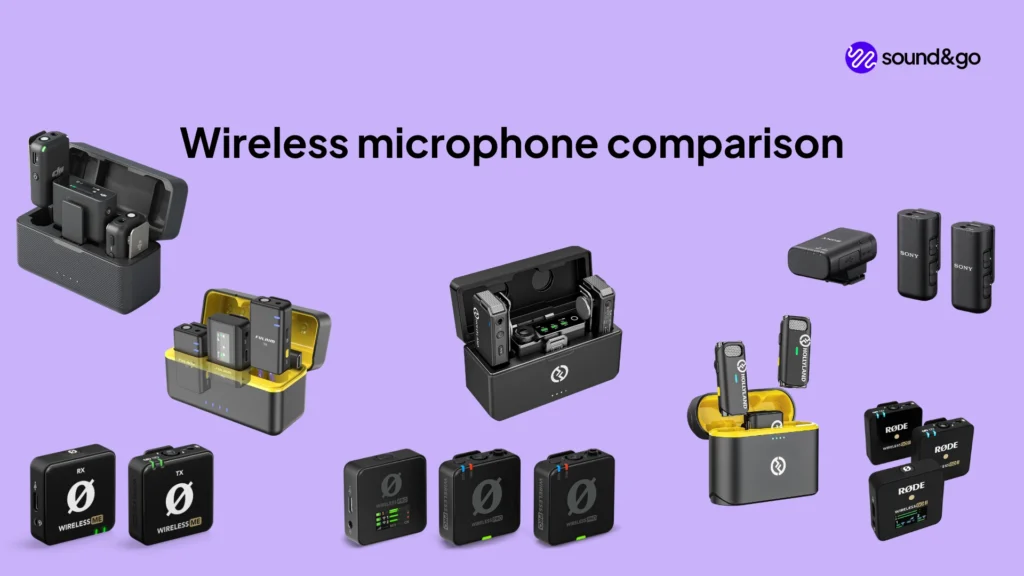
Wireless microphones in comparison
Røde VideoMic GO II: For direct mounting on the camera
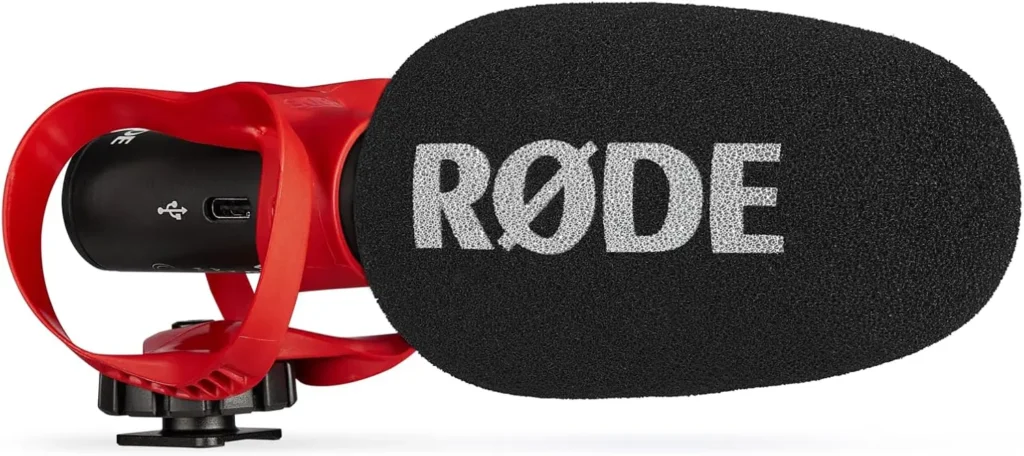
The VideoMic GO II offers an affordable solution for good sound. This model is a condenser microphone, which means it needs to be powered. The Røde VideoMic is powered by the 3,5mm connection. However, the directionality here is supercardioid, so more ambient noise is picked up. This directionality can also be good if the speaker is not standing in the center of the frame. In addition, this microphone can also be mounted directly on the camera. The elastic suspension reduces handling noise, which manifests itself as interference in the recording.

Boya Magic Mini: All in one
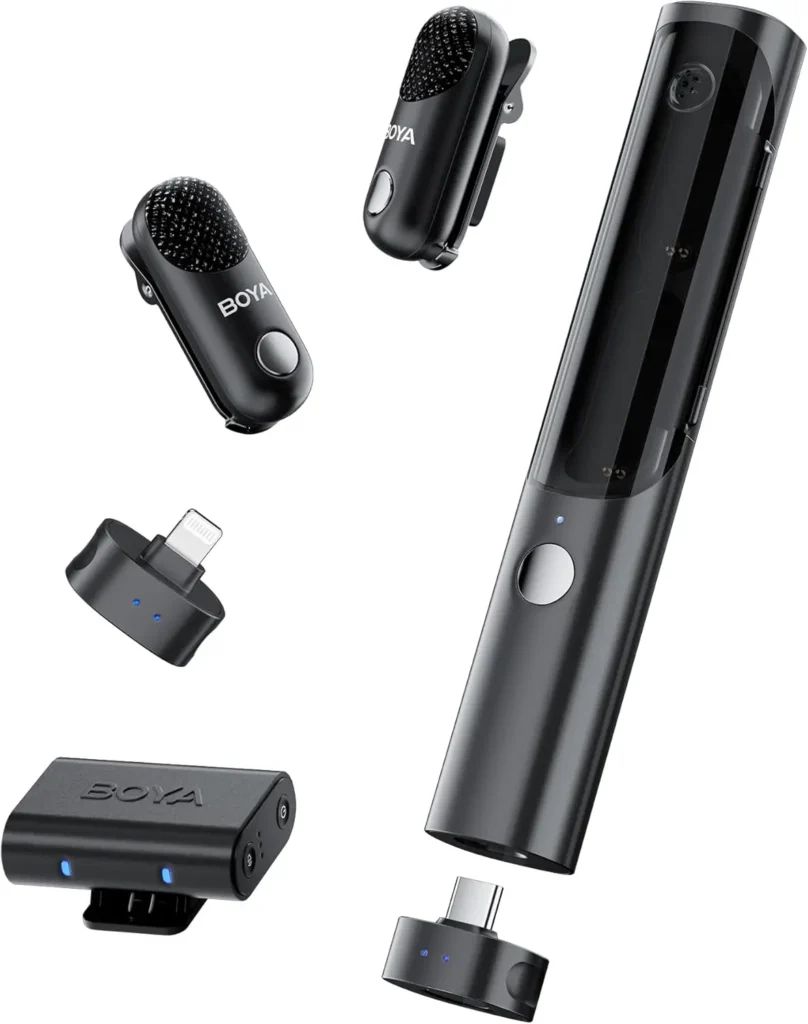
In addition to the well-known brands, Boya, a Chinese manufacturer, is trying to establish itself. With the Boya Magic, the brand has definitely managed to create something new.
With the Magic, you have both a shotgun microphone and wireless microphones. The shotgun can also be used as a wireless interview microphone. Very useful as a camera microphone! Nevertheless, it remains a Chinese company without direct support. The quality is surprisingly good considering the price.
For higher-quality recordings, you should purchase the microphones individually.

Zoom M3 MicTrak: Recording with ambient noise
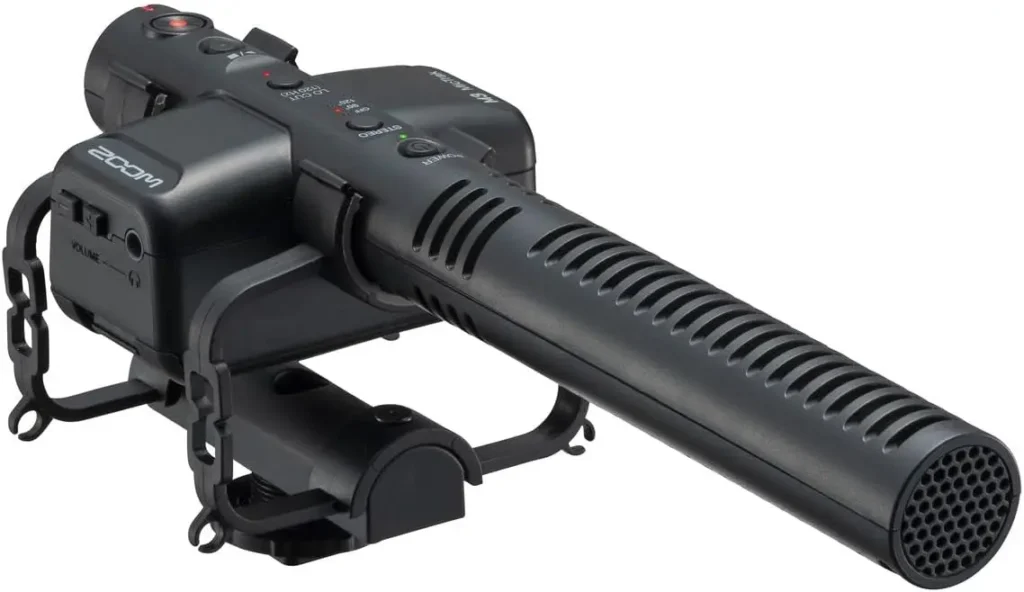
If you want to use a microphone to pick up not only a speaker but also some ambient noise, a stereo M/S microphone is recommended. One example of this is the Zoom M3 MicTrak, which has an integrated recording device. This allows an audio file to be recorded separately from the video. The recordings can also be streamed via USB-C port to a computer, iOS or Android device, and thus smartphones. The hot shoe adapter included in the scope of delivery for mounting on the camera also has an elastic suspension.

Sennheiser MKE 400
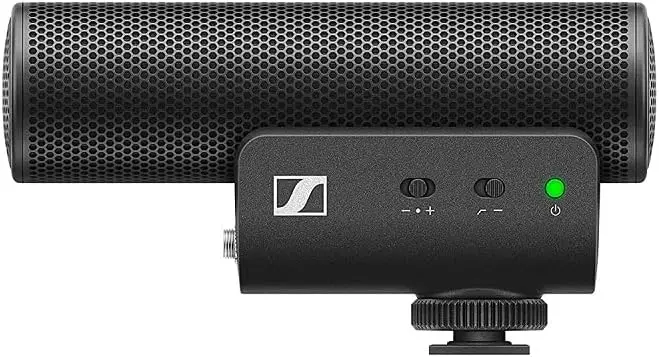
A slightly more expensive model is the Sennheiser MKE 400, which is a supercardioid microphone and has an additional headphone output with a volume control for direct and therefore latency-free monitoring. In addition, low frequencies can be filtered out via a low-cut filter, as there is no elastic suspension to protect against low-frequency noise. However, this means that the microphone can still be used quite well with a handheld camera, as long as the camera body itself does not make a lot of noise.

Røde VideoMic NTG to go more professional
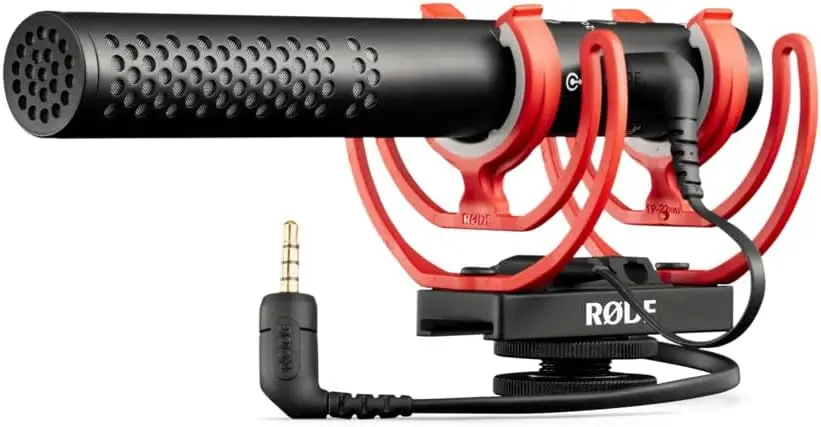
The popular mid-range model is the Røde VideoMic NTG. It sits between the aforementioned VideoMic Go and the NTG-3, which is the eternal classic for high-quality camera sound. The NTG doesn’t sound quite like its big brother, but it is a little “smarter.” It has a 3.5 mm and USB output and is battery-powered. With its elastic hot shoe mount, it’s ready to shoot, whereas the NTG-3 requires additional accessories.
If you want higher-quality sound than the Go model offers, this is the one to invest in.

Sennheiser MKE 440 for stereo sound
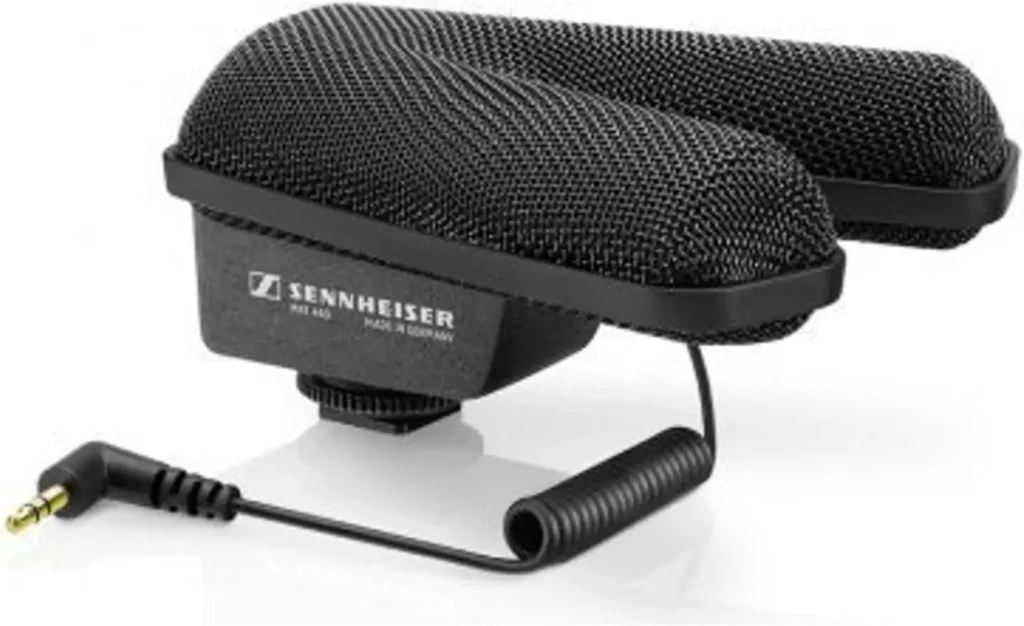
The same manufacturer offers the MKE 440, a model for stereo recordings. This allows two speakers standing next to each other to be recorded perfectly for video productions. In addition, it is also well suited for recording atmospheric sound for B-roll or quieter recordings. It features a cold shoe mount that allows it to be placed directly on a DSLR camera. Only two AAA batteries are required for a simple power supply.

A wind protector is essential
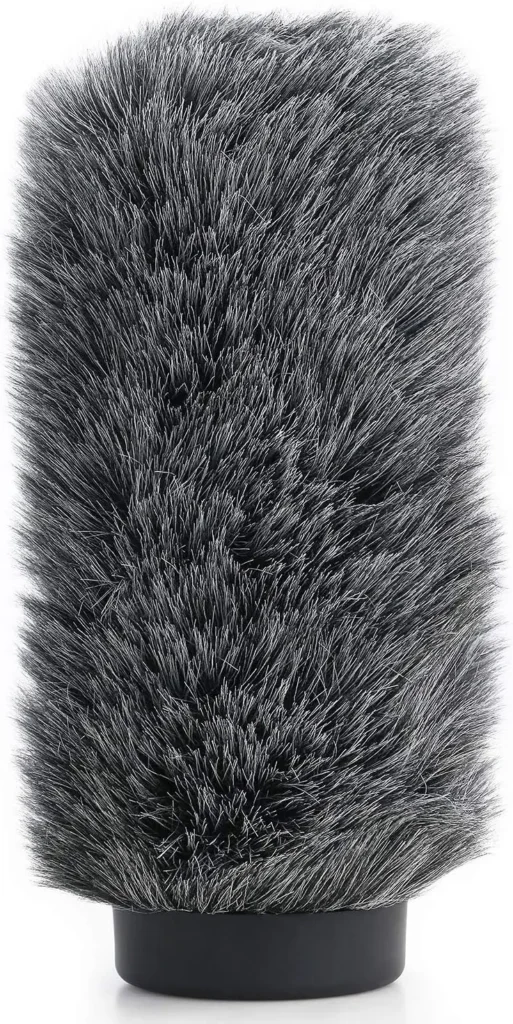
If you’re looking for a good windshield for your shotgun microphones, YouShares offers a more affordable alternative, or you can invest a few extra dollars and get a combination of foam for indoor use and a windshield for outdoor use from Rycote. Both linked windshield models fit the size of an NTG-3. In any case, make sure that your windshield is compatible with your camera microphone.

Hand-microphones (Handheld)
These handheld microphones are particularly suitable for reporters who want to quickly record themselves or interview partners. These microphones often have a cardioid polar pattern and must be connected to the camera via an XLR connector, which means that an interface in the form of an audio recorder is required—because they are not compatible with the camera’s jack for sound. An audio recorder also has the advantage that you can adjust the level of your microphone. It is also suitable for connecting additional microphones, for example, when there are several speakers or for recording background noise. We will discuss audio recorders in more detail below.
Any dynamic XLR Mic: The "old" solution

In theory, you can also use any dynamic XLR microphone and record it with a recorder. This is particularly practical if you already have a good microphone.
Why a dynamic microphone? Because it records less detail and does not require phantom power. For you, this means you record less background noise and do not need a power supply. The Reporter microphone from Rode is just one example.

Røde Interview Pro: Simply good

If you’re looking for a proper reporter or interview microphone, the Interview Pro is simply the best choice. It can even be paired wirelessly with some Røde Wireless products, and it has internal recording, gain assist, and a rechargeable battery. It’s a great microphone for walking around and recording everything you come across.
It’s super flexible, relatively heavy, sounds a bit bass-heavy, but very good overall. Read more about the microphone in our Interview Pro review.

Wireless Microphones
Wireless microphones are currently very popular due to their direct pickup of the speaker’s voice, as they transmit sound wirelessly and thus allow freedom of movement. Together with continuous development by manufacturers, you get professional and direct sound, even over longer distances depending on the model. The disadvantage of this solution is that, in addition to a microphone, you also need a transmitter and a receiver (so-called radio links) for wireless transmission. These microphones are now even less expensive than good shotgun or handheld microphones.
DJI Mic Mini: Almost unbeatable
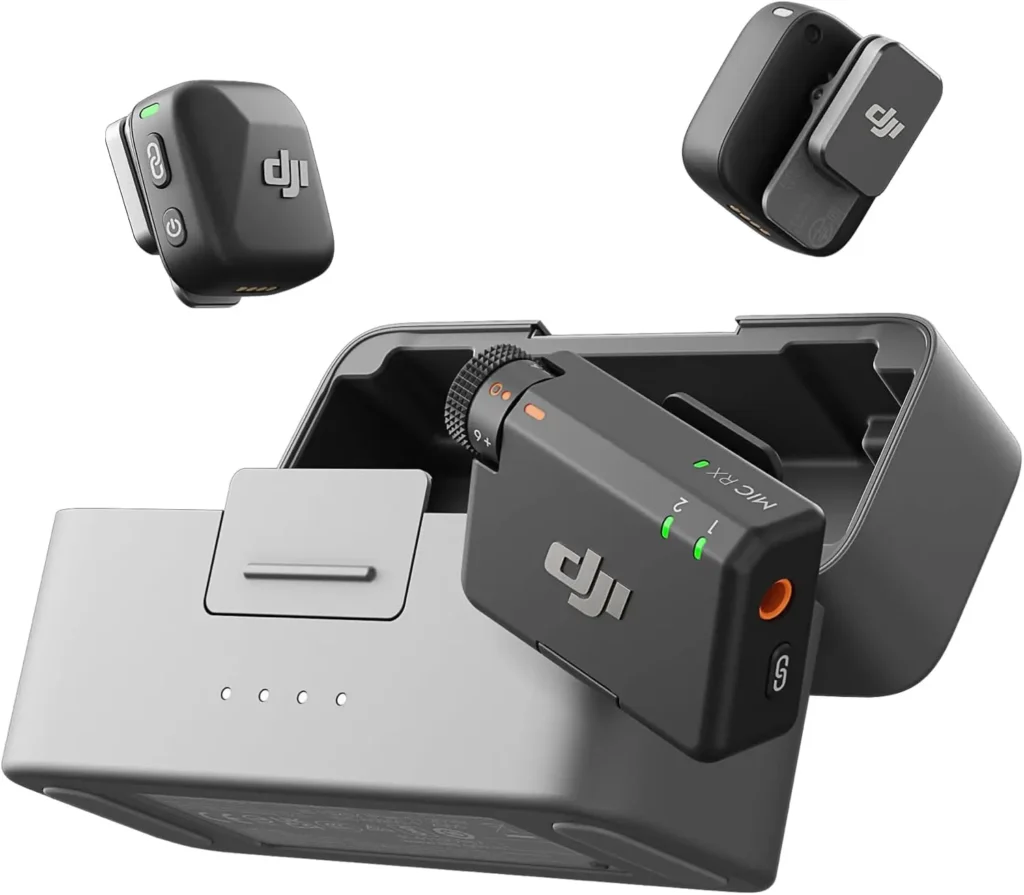
The DJI Mic Mini is a mini microphone that is available in a double set (two transmitters and one receiver) as well as in an even more affordable single set. It offers real flexibility, as the microphone is very small and has several connection options. In addition to USB-C, it also has a 3.5 mm output that you can plug directly into your camera.
The disadvantage is that you cannot record with an external microphone and you are dependent on the wireless connection, as this model does not use internal recording. However, if you maintain visual contact between the transmitter and receiver, the connection is very stable. Read more in our DJI Mic Mini review.

Rode Wireless Pro: It's getting professional

The Røde is, of course, slightly larger than the Mic Mini, but it also has more features. You can record internally with 32-bit float (meaning less or no distortion) and you can connect an external microphone.
The Wireless Pro also supports timecode. This means that if you have recorded internally to the transmitter, you can synchronize the audio track with the video track with just two clicks. This is, of course, fantastic for a camera microphone. The DJI Mic 3 can do this too, but it does not have the option of connecting an external microphone. Therefore, for us, the Wireless Pro still wins the prize for the best pro microphone.
The Hollyland Lark Max 2 also supports timecode. However, for us, the Pro still offers the best overall package. Read more in our wireless microphone comparison.

Atmospheric recording with audio recorders

However, using all of these microphone techniques—especially lavalier microphones—creates a problem in terms of sound: there is no depth or stereo width in the recording. The atmosphere of the environment is not recorded. As a result, the sound ends up sounding too direct and one-sided: you can’t hear what’s happening in the background. For more professional productions, additional recording using XY microphones is recommended, which can be done with field recorders.
Several microphones can be connected to a separate audio recording system, such as the Zoom H4essential, whose signals are mixed harmoniously and forwarded to the camera. Due to the size of this system, it can be set up on an additional tripod next to the camera. The Sennheiser MKE 440 camera microphone can be used to make stereo recordings, but the sound lacks the directness that can be achieved with a lavalier microphone.
Incidentally, recordings should always be made in 48 kHz and 24-bit audio quality. Unlike 16-bit, 24-bit offers more headroom, allowing for film recordings at higher volumes.

Zusammenfassung Kamera Mikrofon
Now we have given you everything you need to choose the right microphone for you. Once you have thought about what you actually want to record, choosing the right microphone should be enough to get good results. When recording, however, you should make sure that the distance between the microphone and the speaker is not too great.
As a general rule, the closer the microphone is to the speaker, the better you can understand them. Wireless microphones allow you to record speakers over long distances, making them the first choice for documentary production. However, if you want to interview different people spontaneously, a shotgun microphone combined with a boom pole is a better option, as it allows you to “fish” for sound in a targeted and flexible manner – provided you have an additional person for sound during production.
If you are working alone, a cardioid microphone is recommended for direct mounting on the camera via a hot shoe. The Sennheiser MKE 440 offers a solution between these applications for recording stereo sound in front of the camera. Different microphone types offer suitable solutions for a wide variety of applications – and who knows what innovative microphone ideas manufacturers will surprise us with in the future.
This might interest you:
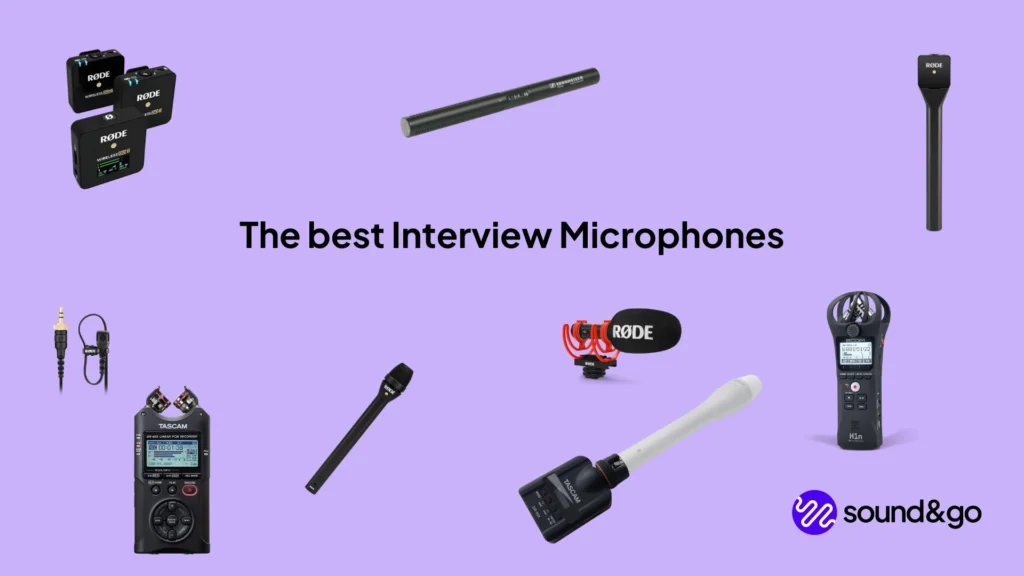
The best interview microphones
Links marked with * are affiliate links. There are no additional costs for you, some of these links are with an automatic discount for you. We mark these links for transparency and would never recommend bad products. Find out more here: Our partners.


